Lunching on the Lot: Remembering the Golden Age of Hollywood Commissaries
- Oops!Something went wrong.Please try again later.
- Oops!Something went wrong.Please try again later.
- Oops!Something went wrong.Please try again later.
- Oops!Something went wrong.Please try again later.

With both Disney and Warner Bros. turning 100 this year, it’s a great time to remember the Golden Age of moviemaking. The business is changing at a precipitous rate, and recent studio mergers have forever altered the longtime map of Hollywood production.
Actors and crew members, like armies, march on their stomachs, and since the dawn of the industry, it’s been up to the studios where they’re shooting to keep them well fortified. Studio executives and office workers, too, needed a convenient place to eat on the lots.
More from Variety
Don Murray, Oscar-Nommed for His 'Bus Stop' Role Opposite Marilyn Monroe, Dies at 94
Kim Kardashian to Produce and Feature in Elizabeth Taylor Docuseries
While researching the recent Culinary Historians presentation “Lunching on the Lot,” a 1997 quote from Variety story turned up which deftly explained what studio commissaries meant to the business. “After a gourmet tour of studio eateries, however, one thing is clear — It ain’t the chow that’s important. When the tribe hunkers down for its daily repast, ritual and symbolism are the rule. Who goes to which lot, who sits where and what kinds of food are served — it’s all about power.”
Most studios still have commissaries and executive dining rooms, some with solid culinary credentials, but it’s safe to say things are quite a bit different from when a visitor could run into Cary Grant, spot Hedda Hopper chatting up Walt Disney or witness Lew Wasserman holding court at Universal.
In 2004, Variety wrote a cover story looking back at those glory days, which started off, “The commissary was a mandatory destination where ideas, stories and gossip were traded.” Even 19 years ago, Hollywood was changing fast.
Peter Bart, former editor of Variety and head of production at Paramount, recalled that kibitzing at commissaries often led to dealmaking — and even Oscars. “I used to have my table next to John Wayne’s, and Duke always had a steak for lunch. One day after lunch I dropped by to say hello and and gave him the book called ‘True Grit,’ and said ‘I’d like you to have someone read it or read it yourself because you’ll enjoy it.’ That’s what you could do then.”
That encounter may have resulted in Wayne winning his first and only Oscar for portraying the eye-patch-wearing lawman Rooster Cogburn in the 1969 adaptation of “True Grit.”
Bart goes on to remember how the seating worked at Paramount. “(Robert) Evans would have his friends, the top agents and some of the directors, people like ‘Rosemary’s Baby’ producer Bill Castle at his table. The old time producers like Castle and A.C. Lyles were big timers there. The people I would have lunch with would be usually the directors who I knew best, Hal Ashby and Mike Ritchie from ‘Downhill Racer.'”
“I don’t know if they do that anymore, people interacting from table to table,” Bart muses.
These days, fewer productions are made on the lots, and many of the studio employees prefer to eat in their offices when they’re not working at home. And one of the big differences is that stars are never photographed at studios anymore — photo ops happen on red carpets, not while actors are eating lunch.
Each studio had its distinctive style, stars and menu items, from Disney’s cartoon-bedecked menus to Fox’s historic murals. Here’s a small taste of what was happening in these Hollywood hotspots.
Disney
Though Disney turns 100 years old on Monday, it didn’t always have a large studio lot. When it was located on Hyperion Avenue in Silver Lake, Walt Disney and his associates often ate at the Tam O’Shanter on Los Feliz Blvd. But after the success of “Snow White,” the Burbank studio was constructed with a full commissary, opened in 1940, as well as a tearoom in the animation building for the all-female ink and paint department.
Walt Disney wanted the studio lot to feel like a campus, with areas where everyone could relax and play ping pong and baseball. The commissary and surrounding campus served as a shooting location for films like “The Computer Wore Tennis Shoes” with Kurt Russell and “The Shaggy Dog.”
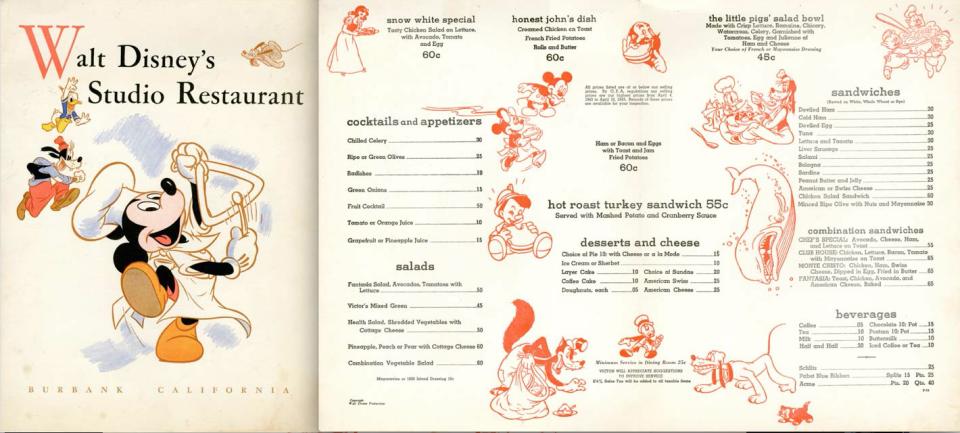
Katherine Beaumont, the voice of Alice from “Alice in Wonderland,” told the D23 blog, “Walt would come down to the cafeteria and go through the line at lunchtime, with his tray, and find a place to sit just as everybody else was doing at lunch. He would visit with people.”
Walt Disney was famous for loving his chili with crackers, so of course the Disney commissary served it and still does. “Walt loved chili, stew and tuna fish sandwiches,” says Disney’s archivist Becky Cline.
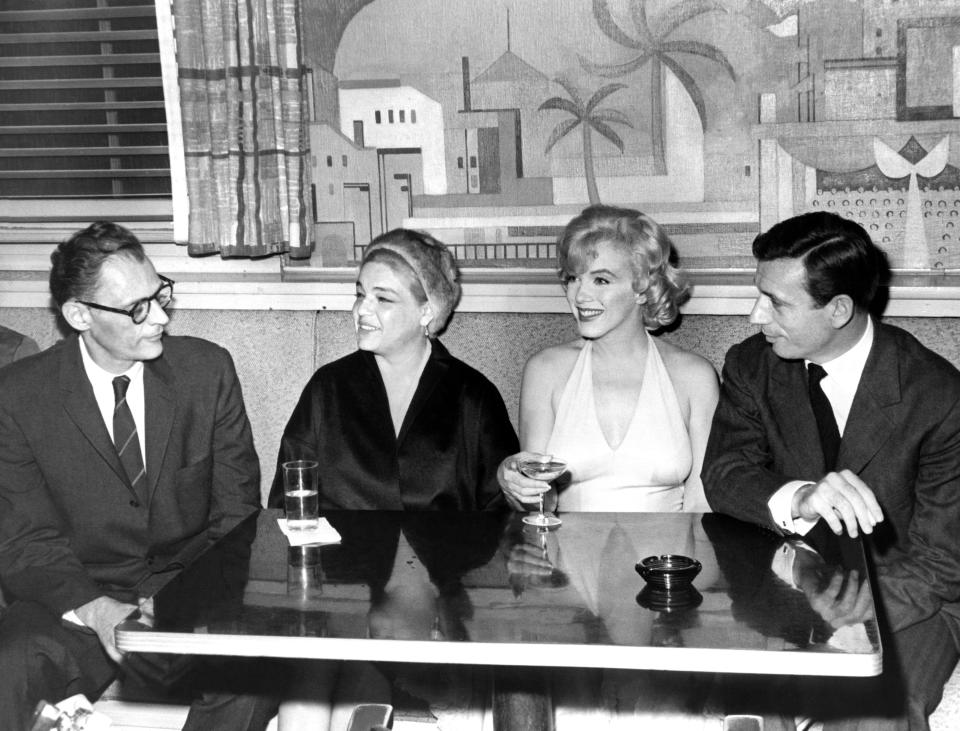
Fox
Fox built its first commissary on the Pico Boulevard lot in 1929, with actors Will Rogers and Fifi D’Orsay helping launch the Café de Paris restaurant. It was – and is – famous for its beautiful art deco murals.
The colorful stylized murals, depicting movie stars and world capitals, were added in 1932, designed by art director Haldane Douglas, an Oscar nominee for the film “For Whom the Bell Tolls.” The murals are part of the only original studio commissary that still exists, and although Fox has sold its film operations to Disney, the Commissary Dining Room is still open for lunch. During World War II, the Berlin part of the mural was painted over and replaced with Athens, the birthplace of then-studio head Spyros Skouras.
To oversee the commissary, Fox brought in former Brown Derby manager Nick Janios, who will go down in history as the inventor of the Cobb salad, and stayed at Fox from 1934 to 1971. Fox’s menus also had dishes promoting movies, like the questionably-named “Boston Strangler” sandwich — simply an avocado ABLT.
One of the biggest news events ever at a studio commissary was when Nikita Khrushchev, the leader of the Soviet Union, dined at Fox in 1959 on his North American tour. Ronald Reagan and Bing Crosby turned down the coveted invitation, lest they get too close to Communism, but Frank Sinatra, Dean Martin, Judy Garland, Tony Curtis, Kirk Douglas, Zsa Zsa Gabor and Henry Fonda were just a few names on the star-studded guest list. The biggest name was Marilyn Monroe, whom Skouras begged to come, though her leftist husband Arthur Miller was not invited. The studio also asked if she would wear something tight, black and sexy, according to Smithsonian. Later, she said about Khrushchev: “He looked at me the way a man looks on a woman.”
The dignitaries and stars dined on shrimp, squab, wild rice, Parisian potatoes and peas with pearl onions. But word came down in the middle of the lunch that Khrushchev wouldn’t be able to go to Disneyland as he had intended, due to security concerns, so he spent much of his 45-minute long speech complaining about the change in plans.
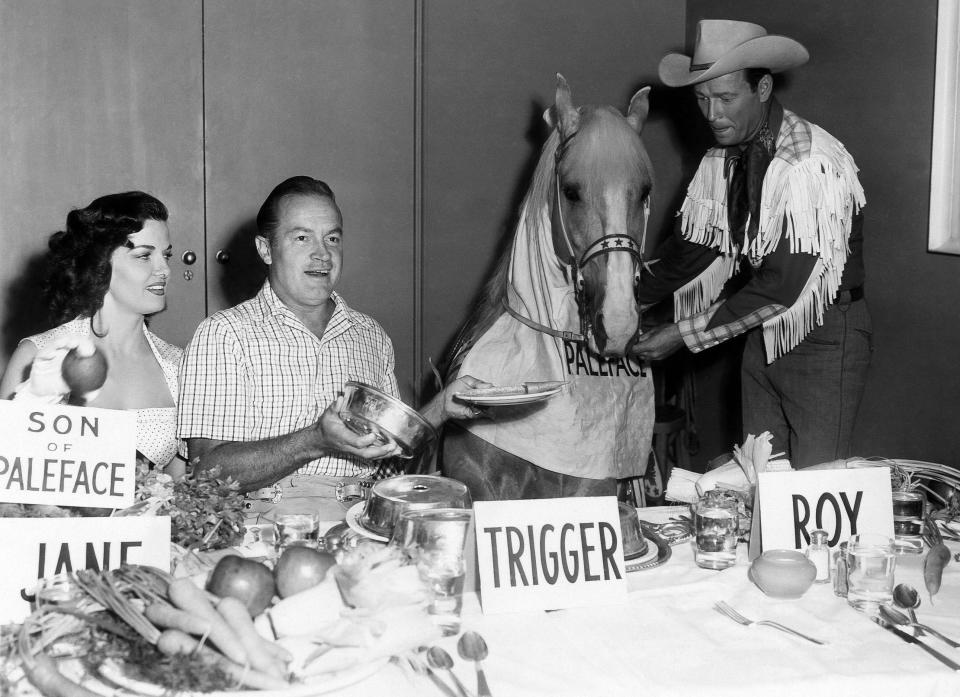
Paramount
In the 1930s, Paramount’s glamorous Café Continental offered elaborate dishes like sweetbreads, Weiner schnitzel and jumbo southern prawns Newberg en casserole. Alan Ladd was said to love the Spanish omelets.
By 1956, the menu boasted more basic comfort food, but it was full of joke dishes and items dedicated to talent. There was English kippers and eggs a la Danny Kaye and Strawberries Heston with sour cream and honey for Charlton Heston. The Dorothy Lamour salad had pineapple, bananas, cream cheese and Bar le duc – a very expensive imported red currant jelly. Dean Martin and Jerry Lewis were the studio’s biggest comedians at the time, so the menu offered “The Martin & Lewis special High Calorie Diet,” listed with the gag price of $64,000.
“The food was pretty good by the way,” Peter Bart remembered of the Paramount commissary in the early 1970s, “(Paramount Pictures head) Bob Evans often ordered steaks wherever he was, and he would always order well done, but rare in the middle. Then he would never eat more than one bite.”
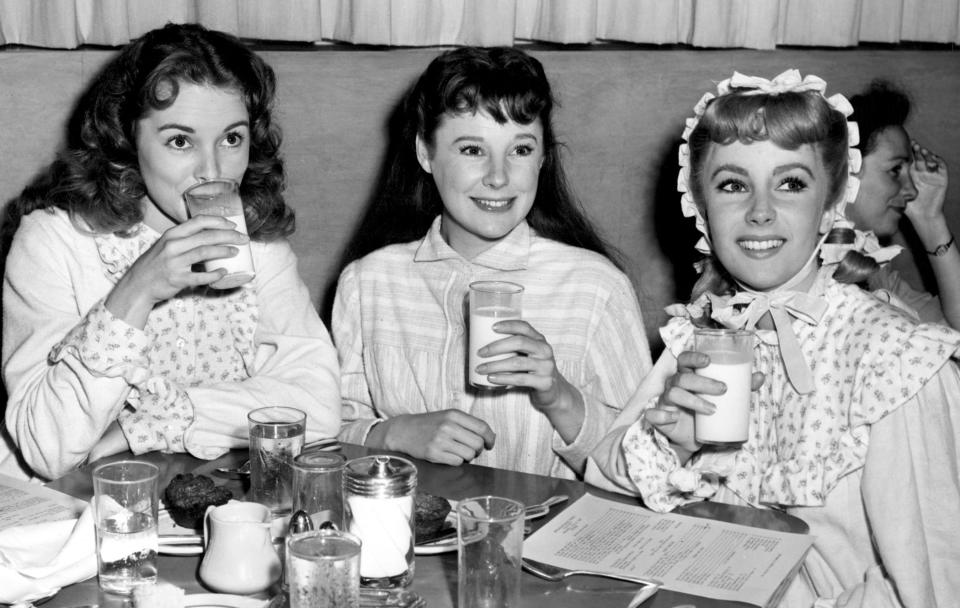
MGM
In the early days of MGM, Louis B. Mayer had the chefs learn to make his mother’s famous chicken soup with matzo balls. He was worried that workers would find their way to Culver City bars at lunchtime and never return, so he wanted to make sure the food was good enough to keep them on the lot and away from the boozing.
Elizabeth Taylor, who worked at MGM from a young age, wrote about bringing her pet chipmunk Nibbles to the commissary in her book “Nibbles and Me.” The head of publicity called the young star into his office, she said, and told her, “As you know, pets are not allowed in the commissary. But we will make an exception because Nibbles is so well-behaved.”
Bart recalled lunching with Roddy McDowall at MGM, who would reminisce about when he and Elizabeth Taylor and the other young stars were teenagers, and they’d go from their classrooms to the set and then to the commissary in full makeup.
Universal
Universal Studios has been open to the public, off and on, ever since it was the first major studio built in Los Angeles in 1915. In those days, the two studio restaurants served 1,000 people a day, with the slogan “Dine With the Stars.” But with the advent of sound movies, and World War II on the horizon, in 1939, Variety reported “U Folds Its Gawper’s Paradise as Looksee” — Variety slang for “Universal Closes Its Gawker’s Paradise.”
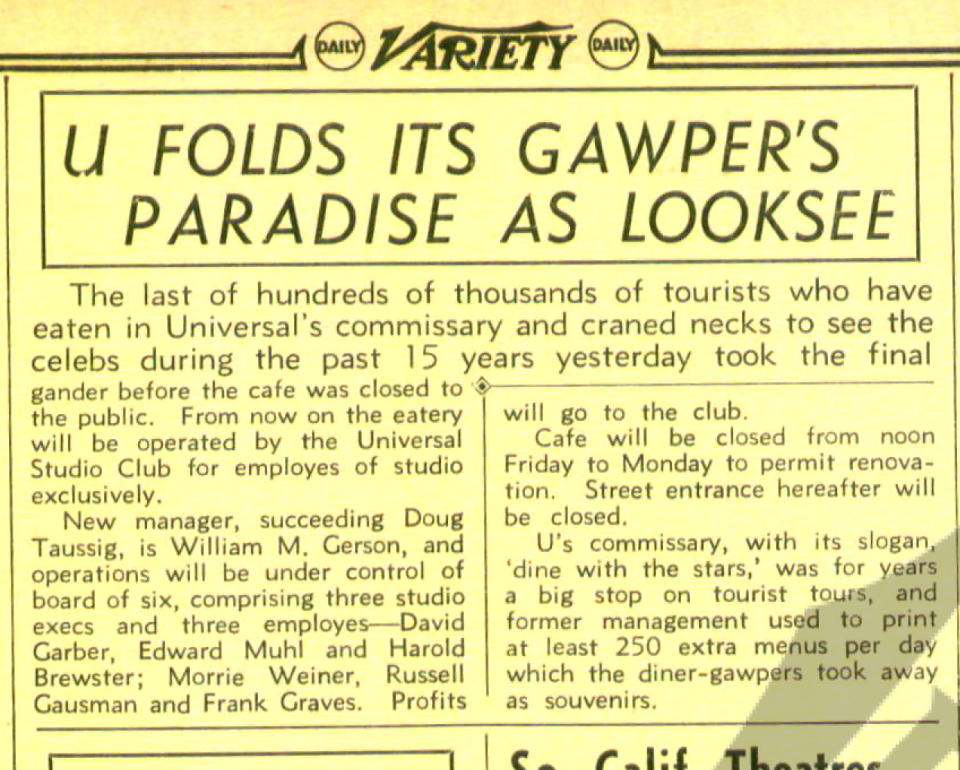
After that, Universal must have been pretty strict about who was allowed in, because in 1942 extras complained to Variety that they weren’t being served coffee at the commissary, and that the commissary manager made “disparaging remarks about background players.”
As business slowed due to the advent of television in the 1950s, Universal once again started allowing tour buses to drive on the lot. Wasserman asked the studio to create a full tour, which started out in 1964 as a 90-minute attraction including a makeup show from the famous Mike Westmore in the commissary basement and a stop at the commissary for lunch.
In 1961, Carl Reiner wrote a humor column for Variety because Army Archerd was on vacation, complaining about how movie people would not fraternize with TV people in the executive dining room. The only exception, he wote, was Cary Grant, who would even talk to radio people.
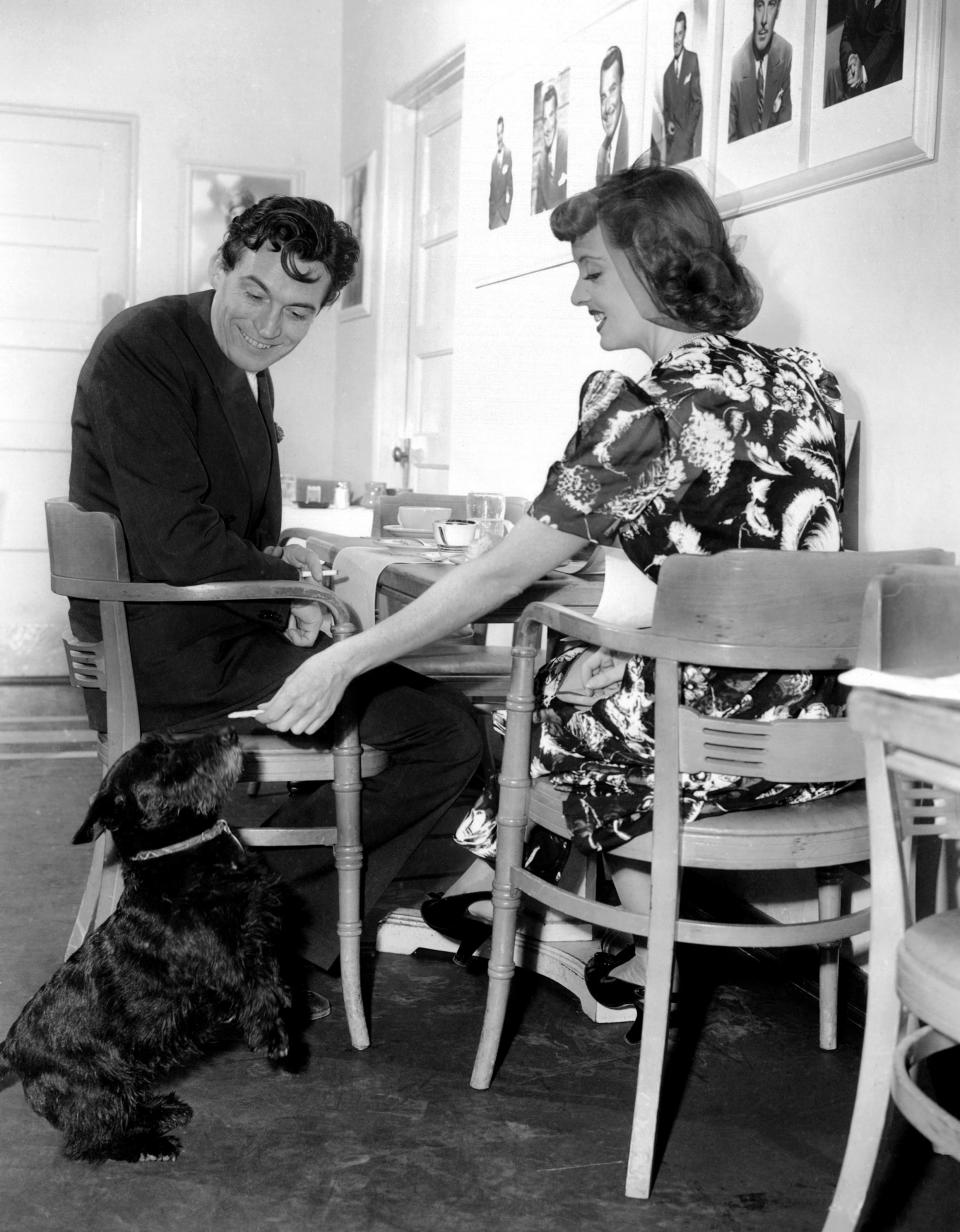
Warner Brothers
Commissaries came into the spotlight earlier this year when a 1941 Warner Bros. menu went viral on Twitter and Reddit, with commenters enthusiastically picking out their lunch choices from the huge menu full of long-gone delicacies.
World War II rationing was still a year away in the U.S., and Hollywood folks could order imported caviar, foie gras at 85 cents, oyster milk stew, oyster cream stew, plus oyster pancakes. Who knew people were eating so many oysters in the 1940s?
Some of the biggest classics of all time were shooting around the time of the 1941 menu – “Casablanca,” “The Maltese Falcon” and “Now Voyager,” to name just a few.
Main dishes in 1941 included hot dogs with Liberty cabbage – actually sauerkraut, but the name was changed during the war due to its German connection.
You could also get hot chicken livers on toast, or the manager’s special sandwich of peanut butter, ham and chicken on toast. For dessert, there was a Chop Suey sunday – dried fruit and nuts in syrup — or desserts called the Vitaphone, the Warner Brothers Theater or the First National. Alas, the descriptions of those desserts are lost to time.
Much later, Charles Perry wrote about the Warners commissary in 1993 for the Los Angeles Times, noting, “You could start out with an impressive venison pâté, served on mixed greens with roasted garlic cloves and grilled shiitake mushroom caps, at least as good an appetizer as you can get in any San Fernando Valley restaurant.” Perhaps it was a left-handed compliment, but still a sign that the Warners’ commissary took food seriously, as it still does with Harry Dashjian as captain of the executive dining room, overseeing dishes like the popular sea bass with farro and the chicken paillard salad. And don’t forget Warners’ other viral hit: the Jennifer Aniston salad, which she customized at the commissary while shooting “Friends.”
There’s no doubt that as traditional studios dwindle, full-service commissaries will go the way of Liberty cabbage. But today’s onsite Starbucks will never be able to match the glory days of dining on the lot with caviar, cocktails and assorted pets of the stars.
(Pictured at top: Marlene Dietrich eats an omelette at Universal; a Disney menu; Edythe Wright and Tommy Dorsey at Fox)
Best of Variety
Sign up for Variety’s Newsletter. For the latest news, follow us on Facebook, Twitter, and Instagram.

